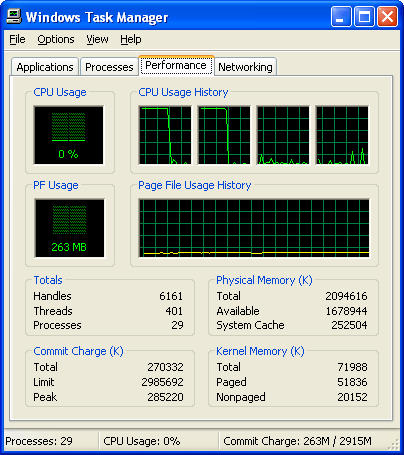Tom's Hardware's 2007 CPU Charts
Status Quo
The status quo today is simple to describe: Intel's Core 2 Duo processors offer better performance than AMD's processors and they overclock better as well. Power consumption is equal: AMD processors require less power in idle, while Intel's CPUs are more efficient under load. As you can see in the benchmark result tables later in this article, a mainstream Core 2 Duo processor already beats the AMD top model Athlon 64 X2 6000+.
To counter this serious disadvantage, AMD started to drop prices, and they dropped them so much that all processors are well below $200 today. If you're looking for good bang for the buck rather than maximum performance and overclockability, don't automatically go for a Core 2 Duo - take some time and compare the prices of both the processor and a suitable motherboard. Also remember that these days, the best deals can change from one week to the next.
Trends: Parallel Processing, Performance Up, Power Down
Windows XP/Vista recognizes and uses up to four logical processors. The Windows scheduler will distribute threads across available processing units. In this case, we used an Intel Core 2 Quad processor with four physical processing units.
Once it crossed the 1 GHz line, Intel began focusing on maximum clock speed with its Pentium 4 and Pentium D processors (NetBurst architecture). However, this endeavor failed before 4 GHz could be reached, and AMD got the opportunity to overtake Intel with its moderately clocked but faster and more energy-efficient Athlon 64 processors. For a few years, the two companies were in a neck-and-neck race until people finally learned that a simple clock speed comparison doesn't do justice to judging performance: finally, performance per clock became important. AMD scored with its integrated dual channel memory controllers; Intel typically offered slightly more advanced platforms, brute-force cache sizes and clock speeds, and its Hyper Threading feature, which allowed the Pentium 4 or Pentium D to work on certain threads in parallel despite there being only one physical processing unit.
Get Tom's Hardware's best news and in-depth reviews, straight to your inbox.
Current page: Status Quo
Prev Page FSB1333 Intel Processors & New 2007 CPU Charts Next Page Status Quo, Continued
Patrick Schmid was the editor-in-chief for Tom's Hardware from 2005 to 2006. He wrote numerous articles on a wide range of hardware topics, including storage, CPUs, and system builds.
